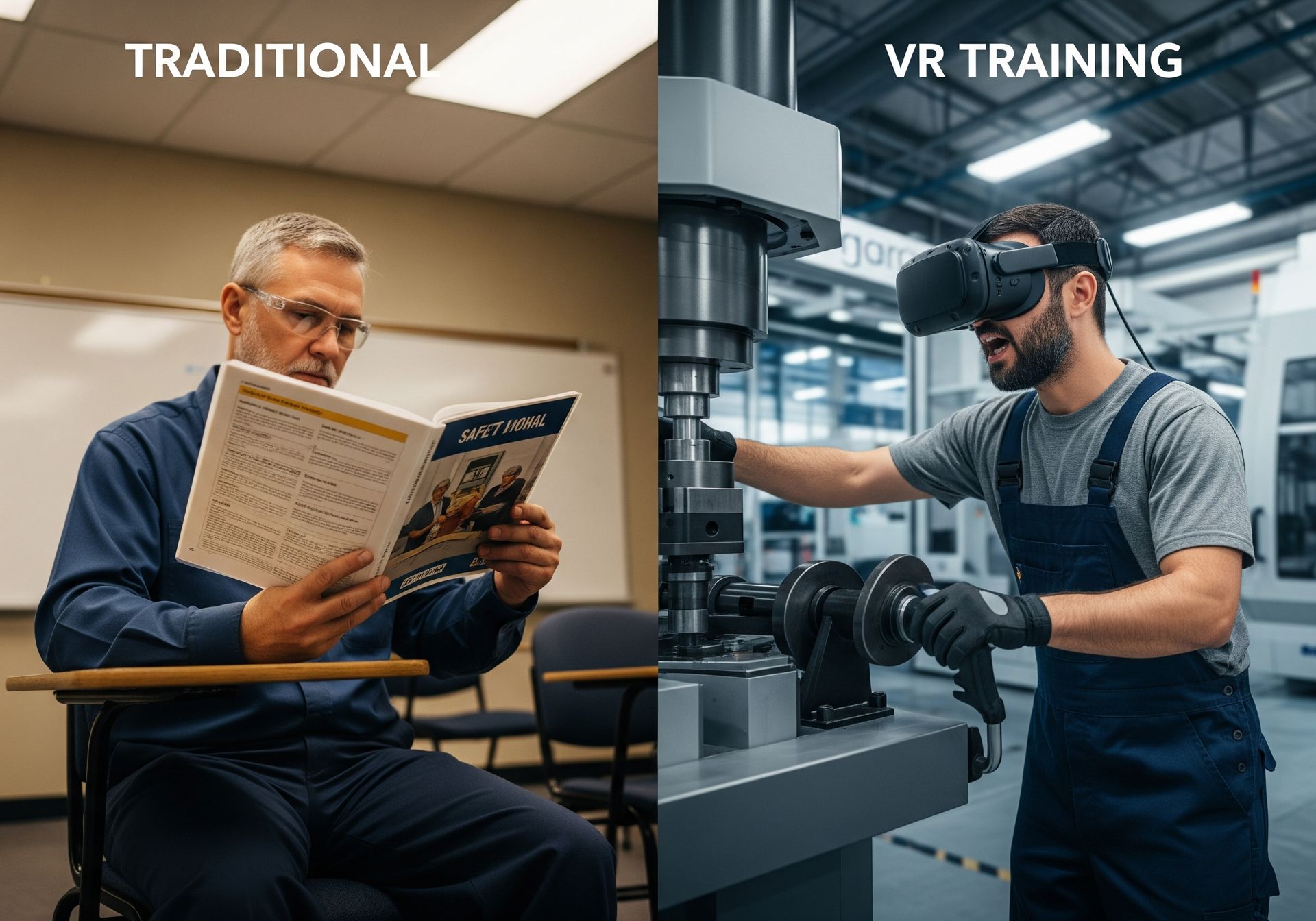Introduction: In the dynamic landscape of the American workforce, companies are constantly seeking more effective and efficient ways to train employees. While traditional methods like classroom lectures, manuals, and on-the-job shadowing have long been the norm, Virtual Reality (VR) training is emerging as a powerful alternative. This article delves into a direct comparison, highlighting why immersive VR solutions are rapidly becoming the preferred choice for elevating professional skills across US industries.
What are Traditional Training Methods? Traditional training methods typically involve instructor-led classroom sessions, reading physical manuals, watching instructional videos, or on-the-job shadowing under supervision. While foundational, these methods can be limited by real-world risks, high costs for specialized equipment, geographical constraints, and a often passive learning experience.
What is VR Training for Workforce Development? VR training for workforce development leverages fully immersive digital simulations to replicate real-world job scenarios. Employees wear VR headsets and step into virtual environments where they can practice tasks, operate machinery, or handle high-stakes situations without actual risk. This hands-on, experiential learning accelerates skill transfer and competency development for the US workforce.
Feature/Benefit
Engagement & Retention
Risk & Safety
Cost & Scalability
Practical Applications
Consistency & Standardization
Feedback & Assessment
Accessibility
Confidence to Apply Skills
Traditional Methods (e.g., Classroom, Manuals)
Often passive, lower engagement. Retention rates can be as low as 5-10% (National Training Laboratory).
High risk for dangerous procedures (e.g., operating heavy machinery, medical procedures).
Lower upfront, but high ongoing costs (travel, instructors, physical materials, equipment wear).
Limited hands-on practice, often theoretical.
Varies by instructor, location, and equipment availability.
Subjective observation, limited real-time data.
Often tied to physical location and instructor schedules.
Can be low, requiring supervised on-the-job practice.
VR Training (Immersive Simulations)
Highly engaging, active participation. Learners are 3.75x more emotionally connected (PwC), retention up to 80% (Accenture).
Risk-Free Practice: Mistakes can be made and learned from without real-world consequences or damage.
Higher upfront (headsets, content development), but highly scalable and cost-effective long-term; reduces travel, materials, and facility costs. (PwC: VR can be 52% cheaper for 3,000 learners over 3 years).
Direct Practical Application: Immediate opportunity to perform tasks and develop muscle memory.
Highly Consistent: Every trainee experiences the exact same scenario, ensuring standardized learning outcomes.
Objective, data-driven feedback on accuracy, speed, and decision-making; real-time performance tracking.
Accessible anywhere with VR equipment; on-demand training reduces geographical barriers.
Up to 275% increase in confidence to apply learned skills (PwC).
Why US Corporations are Investing in VR Training: American companies in sectors like manufacturing, energy, healthcare, and logistics are increasingly turning to VR because it directly addresses critical workforce development challenges. It helps bridge skills gaps, accelerates onboarding, reduces operational errors, and ensures compliance with safety regulations without the prohibitive costs and risks of traditional methods. Companies like Walmart have slashed training times by 96% with VR (from 8 hours to 15 minutes for new equipment). Boeing has cut training time by 75% for manufacturing tasks with VR.
The Future of US Workforce Training is Immersive: VR training isn't just a trend; it's a strategic investment in human capital that yields tangible results. By providing engaging, risk-free, and highly effective learning environments, immersive simulations are revolutionizing how American businesses cultivate a skilled, confident, and highly productive workforce for the future.

